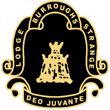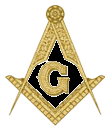
Lodge Burroughs Strange No. 87
Vijayawada, India


Article on Freemasonry - 20
The Antiquity of Masonry
by R.W.Bro. K.A.M.A. Kaliappa Nadar, P.Dy.G.M., P.Dy.R.G.M.,Freemasonry is in its principles undoubtedly coeval with the creation, but in its organisation as a peculiar institution, such as it now exits, we dare not trace it further back than to the building of King Solomon's temple. It was, however, in its origin closely connected with the ancient Mysteries, and the curious enquirer will find some gratification in tracing this connection.
The philosophers and sages discovered by the dim light of nature, the great doctrine of masonry, the Unity of God and the Immortality of the Soul. But these doctrines they dared not teach in public; for history records what would have been the fate of such temerity, when it informs us that Socrates paid the forfeit of his life for his boldness in proclaiming these truths to the Athenian youth.
They therefore taught in secret what they were afraid to inculcate in public, and established for this purpose the ancient Mysteries, those truly Masonic institutions, which by a series of solemn and imposing ceremonies, prepared the mind of the initiate for the reception of those unpopular dogmas, while, by the caution exercised in the selection of candidates, and the obligations of secrecy imposed upon them, the teachers were secured from all danger of popular bigotry and fanaticism. Their members went through a secret ceremony of initiation, by which they became entitled to a full participation in the esoteric knowledge of the Other, and were in possession of certain modes of recognition known only to themselves. In all of them there was, in addition to the instructions in relation to the existence of a Supreme Deity, a legend in which, by the dramatic representation of the violent death and subsequent restoration to life of some distinguished personage, the doctrines of resurrection and of the soul's immortality were emblematically illustrated.
Among these religious institutions was that of the Dionysian Mysteries, which were celebrated throughout. Greece and Asia Minor, and in which a peculiar legend was the murder of Bacchus, or, as the Greeks called him, Dionysus, by the Titans, and his subsequent restoration to life. The priests of Dionysus, by the Titans, and his subsequent restoration to life. The priests of Dionysus, having devoted themselves to architectural pursuits, established, about one thousand years before the Christian era a society of builders in Asia Minor who were styled by the ancient writers "The Fraternity of Dionysian Architects," and to this society was exclusively confined the privilege of erecting temples and other public buildings.
The fraternity of Dionysian Architects were linked together by the secret ties of the Dionysian Mysteries, into which they had all been initiated. Thus constituted, the fraternity was distinguished by many peculiarities that strikingly assimilate to our Order. In the exercise of charity, the more opulent were sacredly bound to provide for the exigencies of the poorer Brethren. For the facilities of labour and government, they were divided into lodges, each of which was governed by a Master and Wardens. They employed in their ceremonial observances many of the implements which are still to be found among Freemasons, and used, like them, and universal language by which one brother could distinguish another in the dark as well as in the light, and which served to unite the members scattered over India, Persia and Syria into one common brotherhood. The existence of this Order in Tyre, at the time of the building of the Temple, is universally admitted; and Hiram, the Widow's Son, to whom Solomon entrusted the superintendence of the workman as an inhabitant of Tyre, and as a skilful architect and cunning and curious work. man, was doubtless one of its members. Hence we are scarcely claiming too much for our Order when we suppose that the Dionysians were sent by Hiram, King of Tyre, to assist King Solomon in the construction of the house he was about to dedicate to Jehovah, and that they communicated to their Jewish fellow - labourers a knowledge of the advantage of the fraternity, and invited them to a participation in its mysteries and privileges. In this union, however, the apocryphal legend of the masons, which was unhappily tarnished by a melancholy incident that occurred at the time.
Upon the completion of the Temple, the workmen who had been engaged in its construction necessarily dispersed, to extend their knowledge and to renew their labours in other lands. But we do not lose sight of the Order. We find it still existing in Judea, under the name of Essenian Fraternity. This was rather a society of philosophers than of architects, and in this respect it approached still nearer to the character of modern speculative masonry. The Essenians were, however, undoubtedly connected with the Temple as their origin is derived by the learned Scaliger with every appearance of truth, from the Kassideans, a fraternity of Jewish devotees, who, in the Language of Laurie, had associated together as 'Knights of the Temple of Jerusalem', to adorn the porches of that magnificent structure, and to preserve it from injury and decay. The Essenians were peculiarly strict in scrutinising the characters of all those who applied for admission into their fraternity. The successful candidate, at the termination of his probationary novitiate, was presented by the Elders of the society with a white garment and which like the unsullied apron, the first gift that we bestow upon an Entered Apprentice, was esteemed more honourable than aught that say earthly prince could give. An oath was administered to him by which he bound himself not to divulge the secrets with which he should be entrusted and not to make any innovations upon the settled usages of the society. he was then made acquainted with certain modes of recognitions and was instructed in the traditional knowledge of the order. They admitted no women into their fraternity; abolished all distinctions of rank; and devoted themselves to the acquisition of knowledge and the dispensation of charity.
From the Essenians, Pythagoras derived much, if not all, of the knowledge and the ceremonies with which he clothed the esoteric school of his philosophy; and while this identity of doctrines and ceremonies is universally admitted by profane historians, many of the most competent of our own writers have attributed the propagation of masonry into Europe to the efforts of the Grecian sage. It is certain that such an opinion was prevalent not less than four centuries ago; for in the ancient manuscript, now well known to Masons, which was discovered by the celebrated Locke among the papers of the Bodleian Library, and it is said to be copy of an original in he handwriting of King Henry VI, himself a Mason, it is expressly said that Pythagoras brought masonry from Egypt and Syria into Greece, from whence, in process of time, it passed into England.
Notwithstanding the celebrity of Pythagoras even at this day among our fraternity, and the adoption into our lodges of his well known problem, one is rather inclined to attribute the extension of masonry into Europe to the frequent and continued communications with Palestine, in the earlier ages of the Christian dispensation. About this period we shall find that associations of travelling architects existed in all the countries of the Continent; that they journeyed from city to city and were actively engaged in the construction of religious edifices and regal palaces. The government of these fraternities of Freemasons - for they had already begun to assume that distinctive appellation - was even then extremely regular. They lived in huts or lodges (a name which our places of meeting still retain) temporarily erected for their accommodation near the building on which they were employed. Every tenth man received the title of Warden, and was occupied in superintending the labours of those placed under him, while the direction and supervision of the whole was entrusted to a Master chosen by the fraternity.
Freemasons continued for a long time to receive the protection and enjoy the patronage of the church and the nobility, until the former, becoming alarmed at the increase of their numbers and extension of their privileges, began to persecute them with an unrelenting vigour which eventually led to their suspension on the Continent. Many lodges, however, had already been established in Great Britain, and these, shielded by the comparative mildness and justice of the British laws, continued to propagate the doctrines of the Order throughout England and Scotland, and to preserve unimpaired its ancient landmarks. From the royal city of York in England, and the village and abbey of Kilwinning, the cradle of masonry in Scotland, our Order continued to be disseminated and to flourish, throughout the two kingdoms, with undiminished lustre, long after the lodges of their less fortunate brethren had been dissolved by the persecutions on the Continent. From this period, the institutions of masonry began to be extended with rapidity, and to be established with permanency. The dignity of the order was elevated, as the beauty of its principles became known, nobles sought with avidity the honour of initiation into our sacred rites, and the gavel of the Grand Master has been more than once wielded by the hand of a King.
